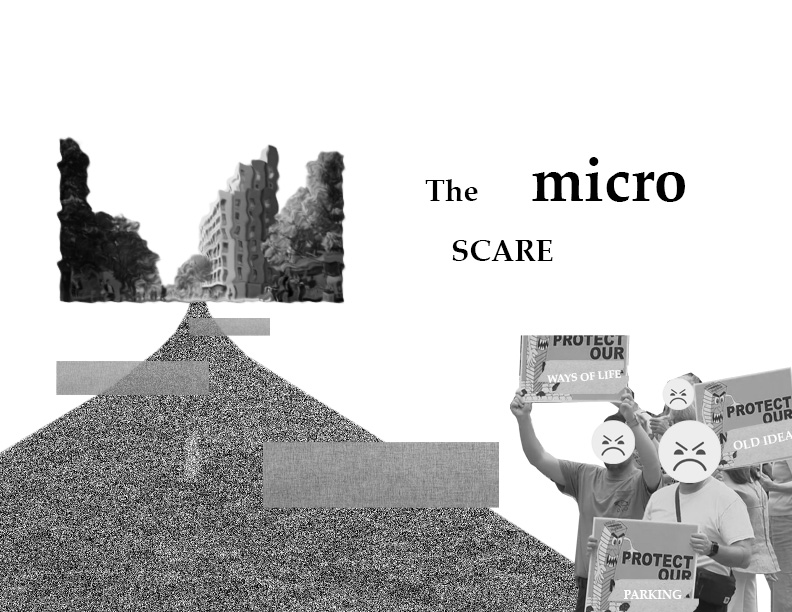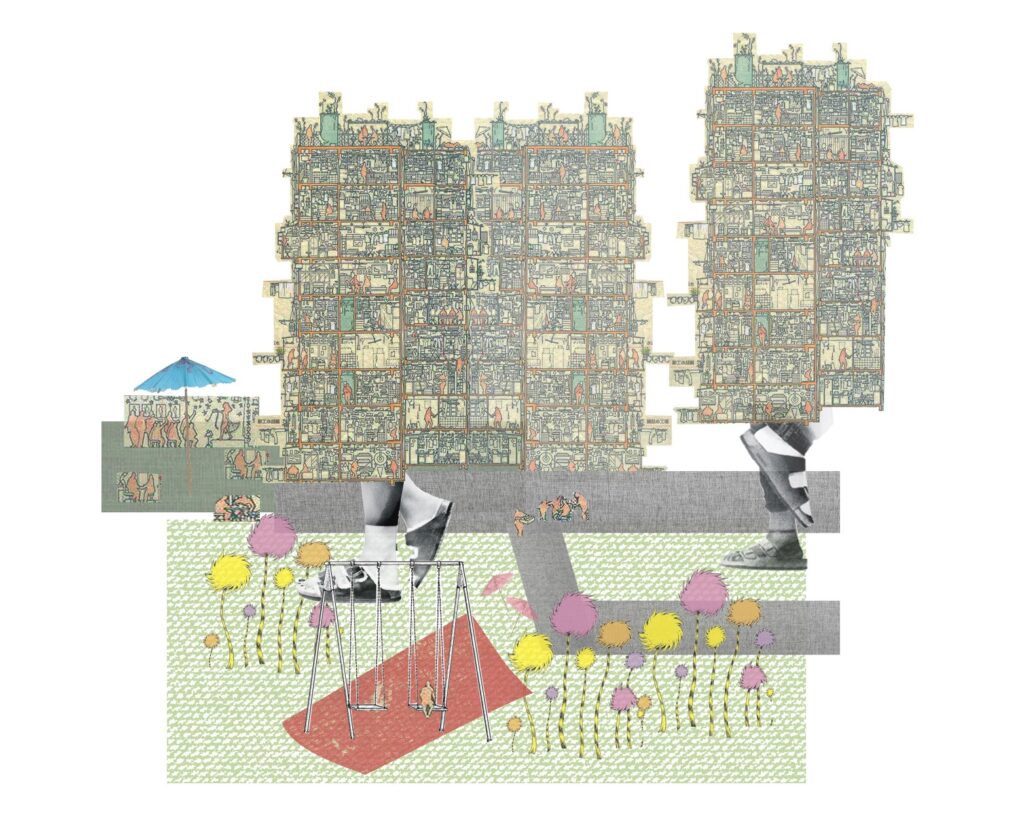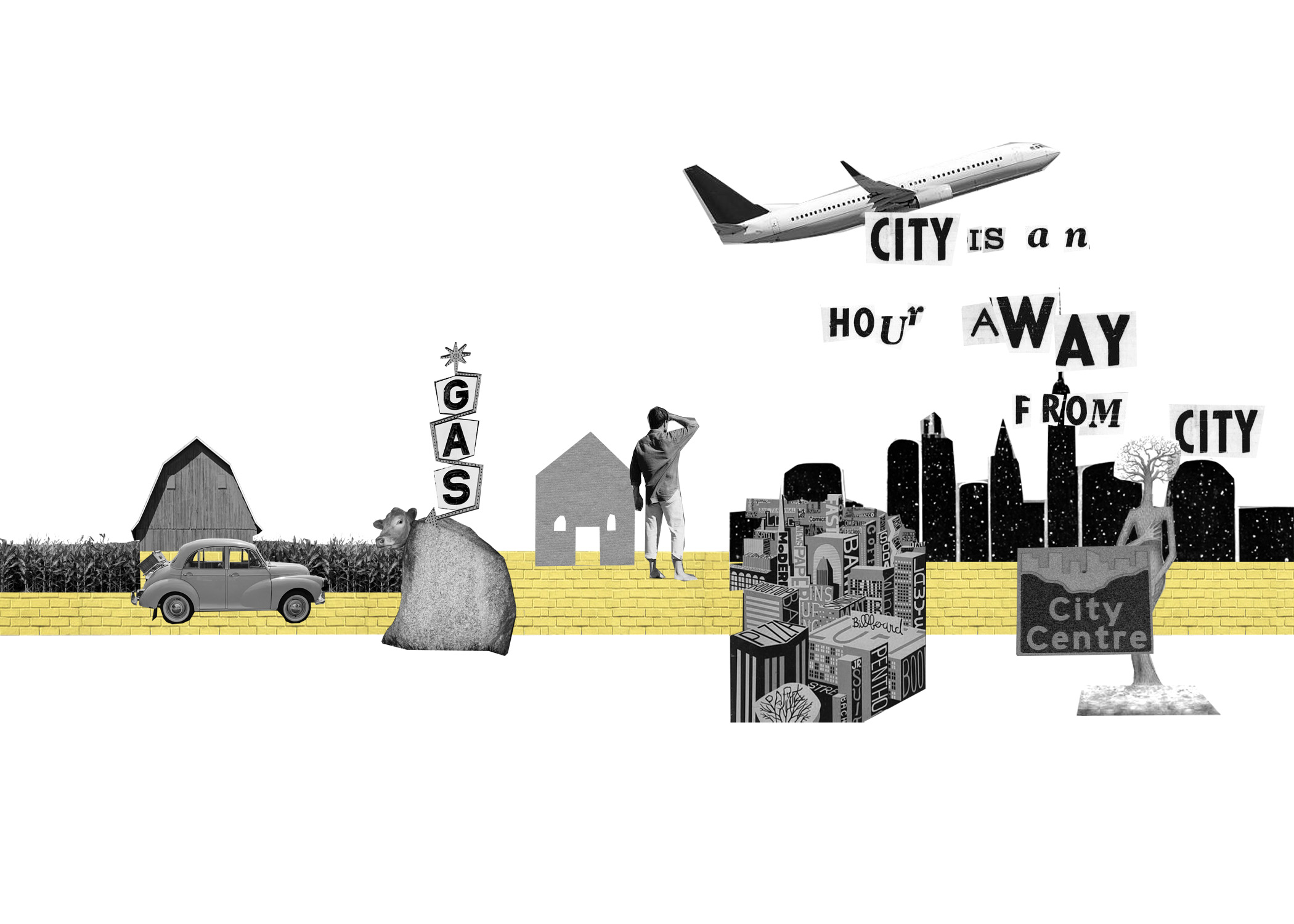
Seen as a sacrifice, living small has been attempted to be rethought with micro-homes and micro-apartments. While applauded in the design world for being sophisticated and ingenious, the realities of rigidness to the fluidity of life have kept it as a niche and nothing more. As such, the importance of an urban space in a denser world could be an answer to those issues. By rethinking the home and the urban fabric, the idea of comfortably living in a small footprint can be transformed into a normalized type of architecture for the masses.
The biggest issue for small dwellings is the overdesign and preconception of what is needed. Attempting to translate a traditional house into a space that is much smaller, there has been a lot of jam-packing in trying to define programs for spaces. From tables that can hide in walls to beds that fold up to create a two-in-one space, these designs meant for flexibility have in fact done the opposite. OMA’s project De Rotterdam attempted to fit five programs in a space that is around 60 square meters. PKMN’s Accordion Home houses a giant transformable module that one has to push and pull to get to their destination. While all the hidden furnishings and transformable spaces seem appealing visually, the overdesign becomes impractical in daily life. This creates an overall rejection of the architecture typology as a whole because it takes away the freedom of living.

Micro-Apartment: A Blurry Future
To solve these issues, it is important to reconsider the programs of a traditional house and understand what is a necessity. Non-Binary Space took away the programmed definitions applied to a traditional apartment. Big Space, Little Space took it further where the entire dwelling was seen as undefined beyond private and public spaces. As the residents could decide on what the other secondary essential programs could be, the input of non-input allowed for the architecture to adapt to live in a small space. Beyond the programs catering to eating, sleeping, and bathing, all other activities can be secondary and up to the residents to decide as they can be outsourced to the city. To live small is to see the city as part of one’s home rather than a separate entity.
In dense urban areas across the world, a lot of necessary functions in daily life are integrated within the urban fabric. An extreme example was the Kowloon Walled City, which was at one point the most densely populated region in the entire world. Seen as a “City of Darkness..and lawlessness”, the quality of life was in fact better than in other parts of Hong Kong as beyond a space to sleep all other core necessities were forced to be shared. (1) Because of the interdependence of shared external spaces away from ‘home’, communities and friendships are fostered in ways one could not have imagined as the entire walled city became the ‘home’ for the residents. While far from perfect, a lesson learned is how the integration of a dwelling unit with the urban fabric is essential, especially for spaces with reduced footprints. In a world where more “people move away from the kinship of small, close-knit communities, and extended families,” the aspects of community in conjunction with core necessities prove as a vital device in promoting one’s physical and mental well-being. (2) In the United States, forgotten topologies such as single-room occupancy (SRO) buildings functioned as the middle ground of a hotel and an apartment. “[Originating] as a form of housing for [people] who desired flexibility of tenure” where beyond the small space for sleeping, all other functions would be in other parts of the building or out in the city. (3)

Lessons from Kowloon
Looking at the modern relationship between housing and the urban fabric more closely one can understand integration as one of success. The Tikku micro-apartment has an area the size of a parking lot and is built vertically. The program of the apartment is up to the resident who is living there as its location was purposely placed in a plaza where many daily functions can be supplemented.

Tikku Micro-Apartment
Making living small a reality is now a necessity as the cities get denser by the day. By questioning the definition of what it means to design compact dwellings without the bells and whistles and understanding its dependency on a well-tuned city, only then will the walls of it being a niche break down. Instead of seeing it as a sacrifice to live small, it will become a desire.
References:
- L.L.K. Prudence, L.W.C. Lawrence, H.C.W. Daniel, ‘Quality of life in a ‘High-rise lawless slum’: A Study of the ‘Kowloon Walled City’. Elsevier Ltd. Hong Kong SAR. 2018. P.160
- Dove , C. (2020). Sociable Housing – Why We Need Multigenerational Homes . Radical Housing: Designing Multigenerational + Co-living Housing For All. RIBA Publishing: London.
- Geffner Thomas (2018). Towards a Smaller Housing Paradigm: a Literature Review of Accessory Dwelling Units and Micro Apartments. Portland State University.
Houston, June 6, 2024

